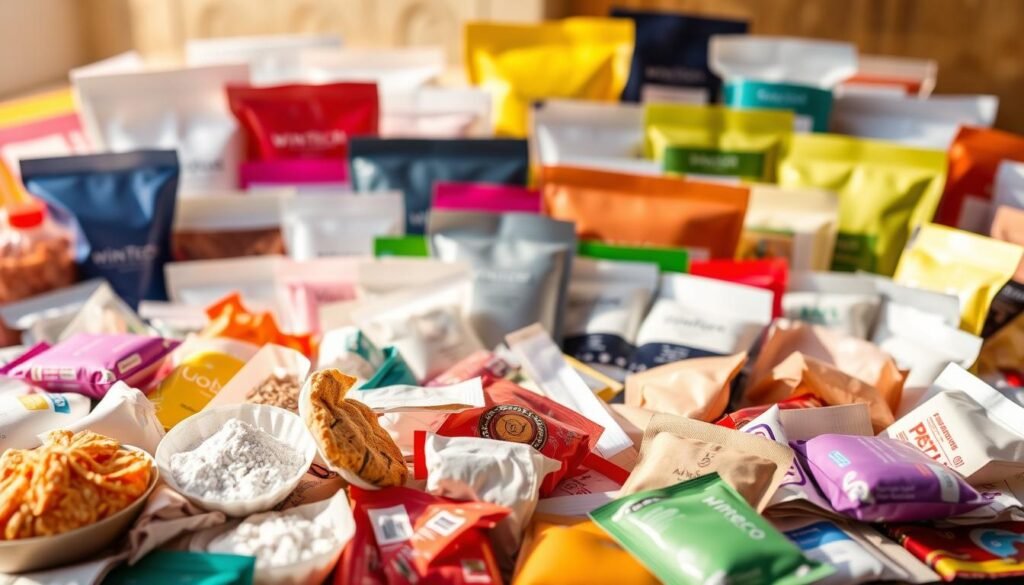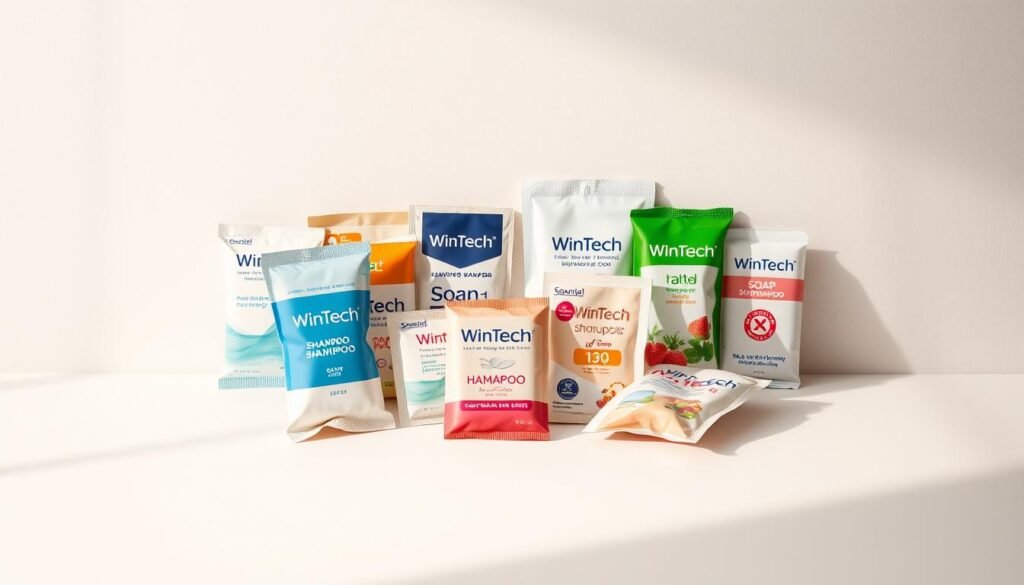Have you ever wondered how tiny packets can revolutionize the way you consume products? What are sachets, and why are they transforming industries worldwide? These small sealed packets are becoming a game-changer in packaging solutions, offering unprecedented convenience for consumers across multiple sectors.
What are sachets exactly? They are compact, single-use packets designed to provide precise quantities of products, from food seasonings to personal care items. The global sachet packaging market is projected to grow from USD 10.44 billion in 2025 to USD 16.9 billion by 2034, demonstrating their increasing popularity and versatility.
Single-use sachets represent more than just a packaging trend. They offer consumers an affordable, portable, and hygienic way to experience products without committing to larger quantities. Whether you’re traveling, meal prepping, or seeking sample-sized options, sachets provide a practical solution that meets modern consumer demands.
Key Takeaways
- What are sachets – Sachets are compact, single-use packaging solutions
- Growing market with significant economic potential
- Provides convenience and affordability for consumers
- Versatile across multiple industries
- Supports on-the-go lifestyle preferences
Understanding What Are Sachets and Their Purpose
Understand What are sachets and how it revolutionized the way products are packaged and consumed across multiple industries. These small, flexible containers offer a unique solution for delivering precise quantities of various substances, from food packaging sachets to personal care products.

When comparing sachets vs packets, you’ll notice distinct advantages that make sachets increasingly popular. They provide unparalleled convenience and portability, allowing consumers to enjoy products in compact, single-use formats.
What are sachets – The Convenience of Sachets in Daily Life
Types of sachets span numerous applications, making them essential in modern consumer experiences. Here are key areas where sachets shine:
- Food industry: Portion-controlled condiments and seasonings
- Personal care: Travel-sized toiletries and samples
- Pharmaceuticals: Precise medication dosages
- Industrial products: Chemical samples and cleaning solutions
Various Applications of Sachets in Different Industries
The versatility of sachets extends across multiple sectors, demonstrating their incredible utility. Let’s explore how different industries leverage these compact packaging solutions:
| Industry | Sachet Application | Key Benefit |
|---|---|---|
| Food & Beverage | Instant coffee, spice mixes | Portion control and freshness |
| Cosmetics | Skincare samples, makeup removers | Product testing and convenience |
| Pharmaceuticals | Single-dose medications | Precise dosage and hygiene |
| Industrial | Chemical concentrates | Accurate mixing and reduced waste |
“Sachets represent the future of smart, efficient packaging across industries.”
By understanding what are sachets and their diverse applications, you can appreciate how these small packages are transforming product delivery and consumption patterns.
What Are Sachets: Benefits You Can Enjoy
Sachets have revolutionized the way consumers experience products across multiple industries. These small, convenient packaging solutions offer numerous advantages that make them increasingly popular among brands and consumers alike.

When exploring the world of disposable sachets, you’ll discover a range of benefits that extend beyond simple packaging. These compact containers provide unique advantages for health, safety, and environmental considerations.
Health and Safety Benefits of Using Sachets
Sachets in cosmetics and personal care products ensure maximum hygiene and product preservation. They offer several key advantages:
- Single-use design prevents contamination
- Precise product portioning
- Extended shelf life for sensitive products
- Reduced risk of bacterial growth
Paper sachets specifically provide an excellent barrier against external contaminants, protecting the product’s integrity and ensuring consumer safety.
Environmental Considerations of Sachets
Modern consumers are increasingly concerned about packaging sustainability. Brands are responding by developing eco-friendly sachet solutions:
| Sachet Type | Environmental Impact | Recyclability |
|---|---|---|
| Traditional Plastic Sachets | High Environmental Burden | Low |
| Biodegradable Sachets | Reduced Environmental Impact | High |
| Paper-Based Sachets | Minimal Environmental Footprint | Very High |
By choosing innovative sachet designs, brands can significantly reduce their environmental footprint while meeting consumer expectations for sustainable packaging.
The future of sachets lies in balancing convenience, safety, and environmental responsibility.
What Are Sachets: Future Market Trends
The sachet packaging market in the United States is experiencing rapid growth, driven by consumer demand for convenient and portable product solutions. As businesses explore innovative ways to deliver sachets for samples, manufacturers are investing in advanced packaging technologies that meet evolving consumer preferences.
Smart packaging designs are transforming how you interact with products. Emerging technologies enable sachets with enhanced functionality, such as QR codes for product information, temperature-sensitive indicators, and resealable features. These innovations make what are sachets more than just simple containers—they’re becoming interactive consumer experiences.
Rising Demand for Sachets in the United States
Market research indicates significant expansion in sachet usage across multiple industries. From beauty and personal care to food and pharmaceutical sectors, businesses recognize the potential of compact, single-use packaging. Your purchasing habits are driving this trend, with increasing preference for compact, sustainable, and easily transportable product formats.
Innovations in Sachet Packaging and Design
Sustainability is reshaping sachet development. Manufacturers are now focusing on biodegradable materials and recyclable packaging solutions. These advancements address environmental concerns while maintaining the convenience that makes sachets for samples so appealing to modern consumers.




